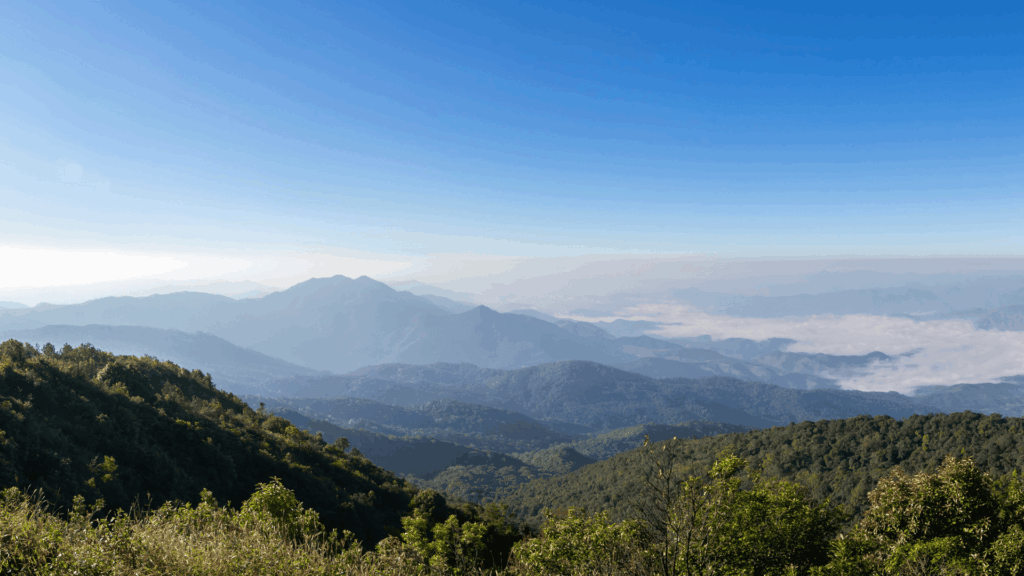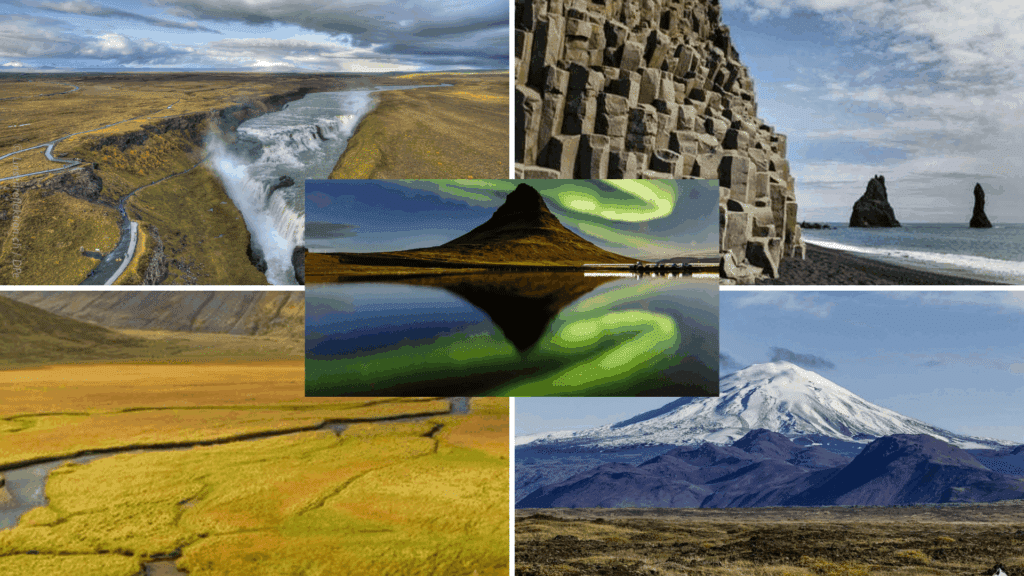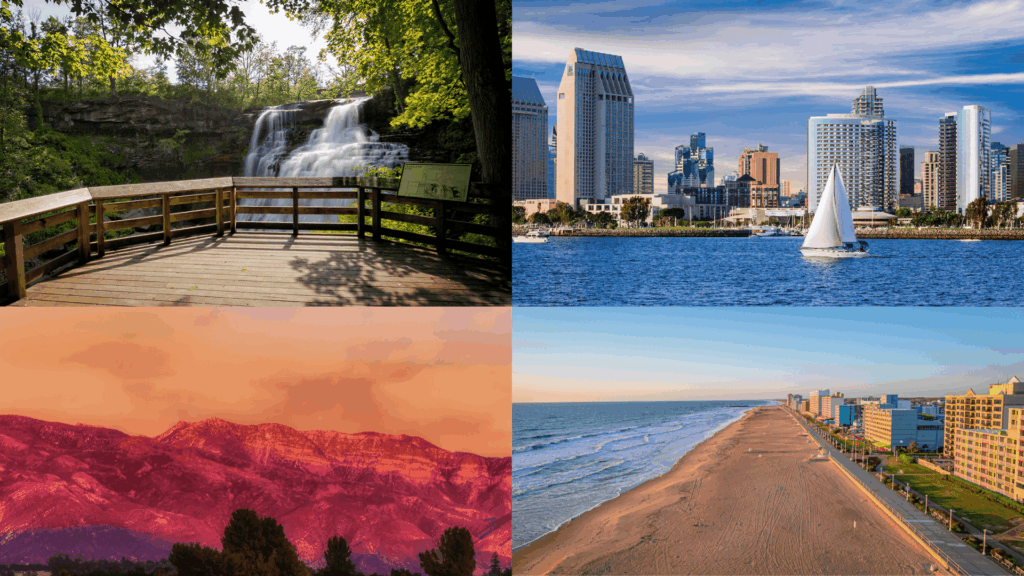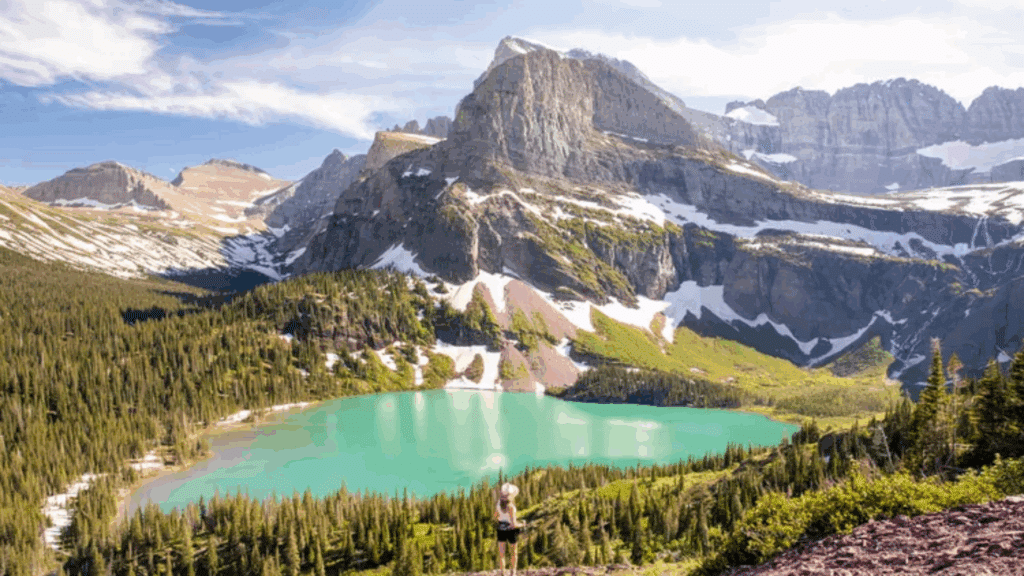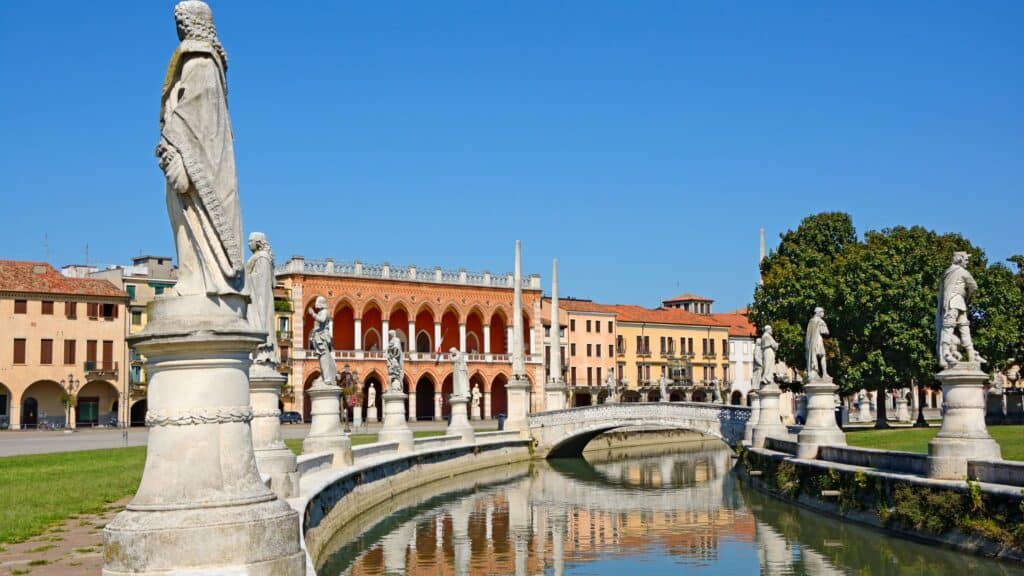Have you ever noticed how some mountains look mysteriously blue from far away?
The Blue Ridge Mountains create one of nature’s most puzzling visual effects that has captivated people for thousands of years.
Unlike typical mountain views where you see green forests or gray rock, these peaks fade into soft blue layers that seem to float in the distance.
This isn’t your imagination. The blue color is real and visible to everyone who looks at these mountains from the right vantage point.
Learning why the Blue Ridge Mountains are blue reveals fascinating secrets about how trees, air, and light work together in ways most people never realize.
See the surprising science behind this natural phenomenon and learn exactly what creates the blue effect that makes these mountains so special.
Where Are the Blue Ridge Mountains?
The Blue Ridge Mountains stretch 550 miles from Pennsylvania to Georgia. This range forms the eastern edge of the Appalachian Mountains.
Mount Mitchell in North Carolina stands as the highest peak at 6,684 feet. Georgia’s Brasstown Bald reaches 4,784 feet.
Two scenic roads provide the best access to view the blue haze:
- Blue Ridge Parkway – This 469-mile road connects Virginia and North Carolina with dozens of overlooks.
- Skyline Drive – This 105-mile Virginia road runs through Shenandoah National Park.
Major gateway cities include Asheville, North Carolina, and Roanoke, Virginia. Mountain towns like Blue Ridge, Georgia, sit directly within the range.
Each location offers different views of the blue effect that gives these mountains their name.
Why the Blue Ridge Mountains Are Blue?
The blue color of the Blue Ridge Mountains comes from a natural process involving trees and light. This process explains why these mountains look blue from a distance.
1. Tree Emissions: Isoprene and Monoterpenes
Trees in the Blue Ridge Mountains release invisible gases called VOCs. VOC stands for volatile organic compounds.
These are hydrocarbons, which just means they’re made of hydrogen and carbon atoms put together. Trees make VOCs like their own bug spray and air conditioner.
The chemicals keep insects away and help trees stay cool. Two main types of VOCs come from these mountains. Oak and poplar trees make isoprene gas. It smells sweet when concentrated.
Pine trees make monoterpenes instead. They create that fresh pine scent in forests. Hot days make trees release more of these gases.
The hotter it gets, the more chemicals float into the mountain air.
2. From Gas to Haze
The gases mix with oxygen in the air. This makes tiny particles that are super small.
You need a microscope to see just one. When natural hydrocarbons from trees react with oxygen in clean mountain air, they create particles that form the blue haze.
Billions of these natural particles float together and create the blue haze you see over the mountains. Heat makes trees release more gases. Sunlight helps the mixing happen faster.
Wet air speeds up the process. Summer has all three conditions. This is why mountains look most blue on hot, humid afternoons.
3. Why the Haze Looks Blue
When sunlight hits the tiny particles in the air, it creates the blue color we see.
Light moves in waves of different sizes called wavelengths. Blue light has shorter wavelengths than red or yellow light.
These shorter blue wavelengths get scattered more when they hit the small particles floating in the air. The longer red and yellow wavelengths pass through more easily without being scattered.
This scattering process makes blue light bounce around in all directions, creating the blue appearance we see when looking at distant mountains. Your eyes pick up blue light more easily than red light. Your brain also notices blue more than other colors.
Clean air makes a soft blue haze. Dirty air makes gray or brown haze. The Blue Ridge stays clean, so you see pure blue colors.
Is the Blue Haze Unique to the Blue Ridge?
The Blue Ridge Mountains have stronger blue haze than most other mountain ranges. Several factors make this possible.
The region has dense forests with many oak and poplar trees. These trees produce more VOCs than other tree types. The climate here is perfect for haze formation.
Hot, humid summers create ideal conditions. The mountains also trap the haze in valleys and between ridges.
Other mountain ranges around the world show similar blue effects:
- Australia’s Blue Mountains: Get their blue color from eucalyptus oil emissions
- India’s Nilgiri Hills: Also appear blue from natural plant emissions
- Canada’s Blue Mountains: Show similar haze from forest VOCs
- Great Smoky Mountains: Share the same blue effect as the Blue Ridge
The Great Smoky Mountains sit right next to the Blue Ridge Mountains. Both ranges have similar trees and climate.
The “smoke” in their name refers to the same blue haze. But the Blue Ridge Mountains show the effect more clearly.
The long ridges create perfect viewing conditions. You can see layer after layer of blue ridges fading into the distance.
Best Places to See the Blue Ridge Blue
The Blue Ridge Mountains offer spectacular views of the blue haze from many scenic overlooks and peaks. Here are the top locations where you can see the blue effect most clearly across different states.
1. North Carolina & Tennessee
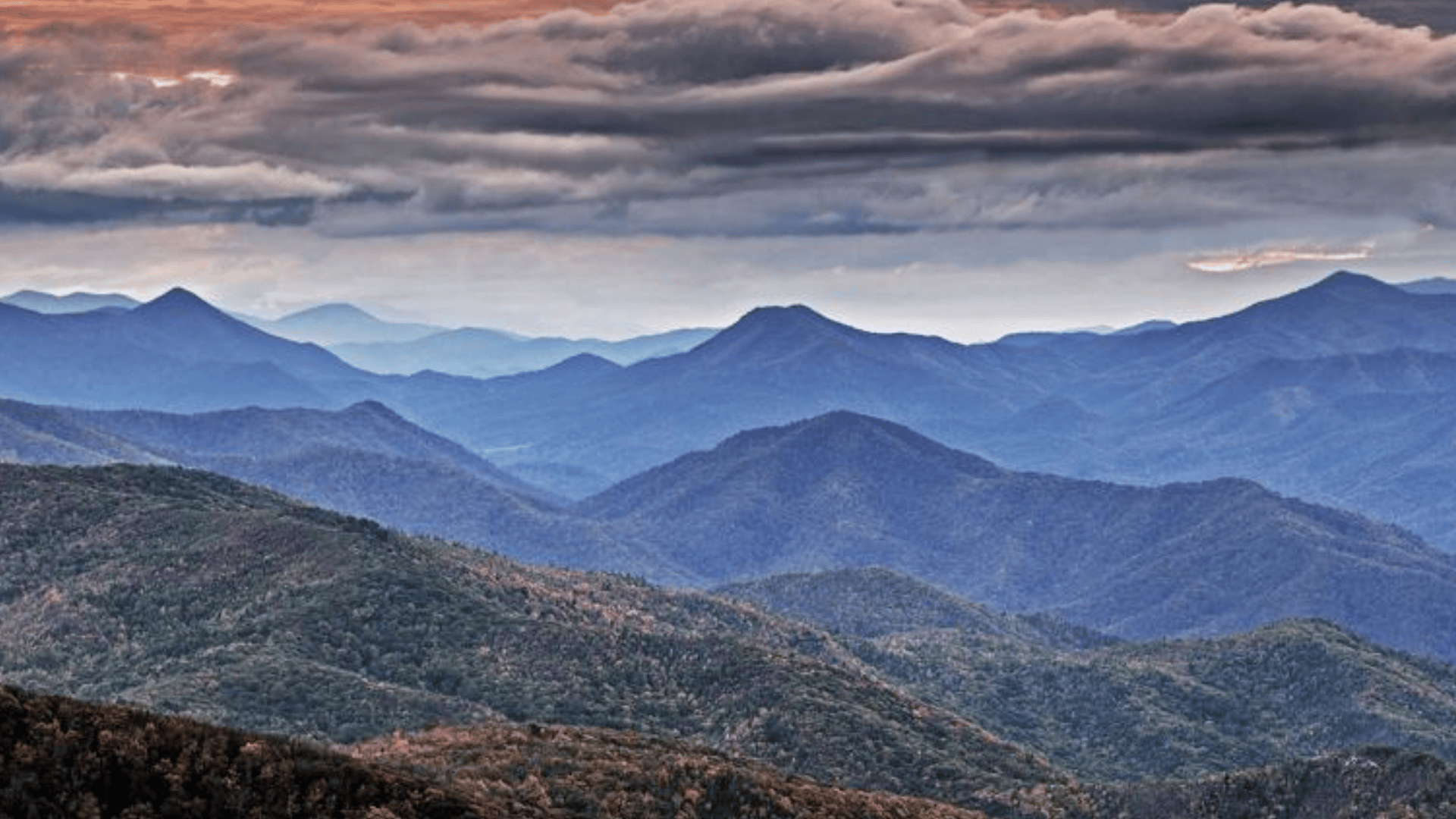
Image Source: Blue Ridge Mountains
Image Source: John City Press
Mount Mitchell offers the best views in North Carolina. This highest peak provides clear sight lines across multiple ridges. The visitor center sits above most of the haze. You can see the blue effect spread out below you.
Clingmans Dome straddles the border between North Carolina and Tennessee. At 6,643 feet, it offers wide views of the Smoky Mountains. The observation tower puts you above the tree line. This height gives you the best perspective on the blue haze.
Craggy Gardens provides another excellent viewpoint. The open meadows on the ridge offer 360-degree views. You can see both the Blue Ridge and the Black Mountains from here.
2. Virginia
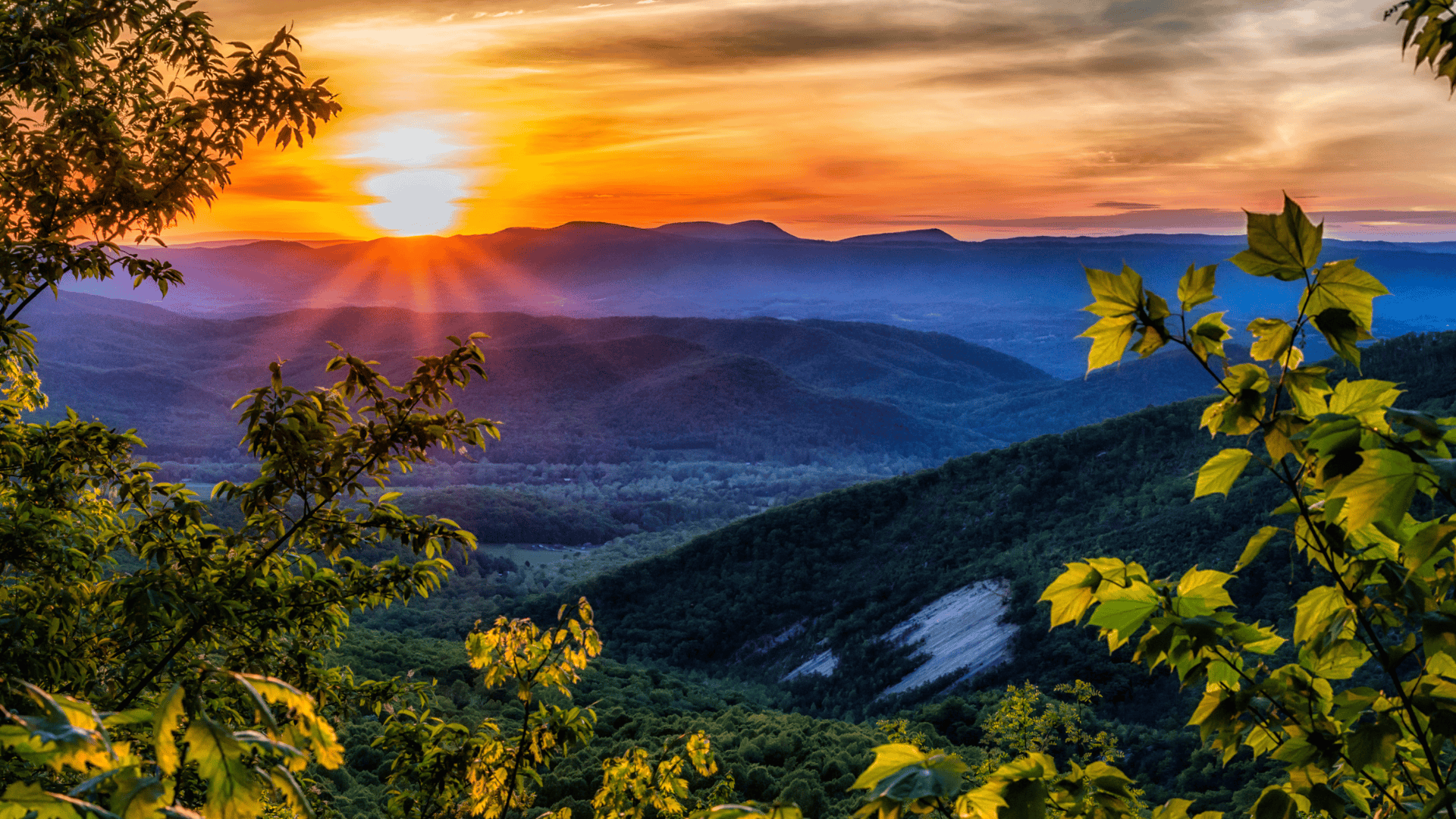
Image Source: Virginia’s Blue Ridge
Skyline Drive has many overlooks perfect for viewing the blue haze. Stony Man Summit offers panoramic views of the Shenandoah Valley. The stone outcropping provides an unobstructed view of distant ridges.
Thunder Ridge Overlook sits at milepost 74.7 on the Blue Ridge Parkway. This spot offers views of the James River Valley. Multiple ridges create a layered blue effect.
Raven’s Roost Overlook provides views of the Rockfish Valley. The overlook faces west, making it perfect for sunset photography. The blue ridges create a beautiful backdrop for golden hour shots.
3. Georgia
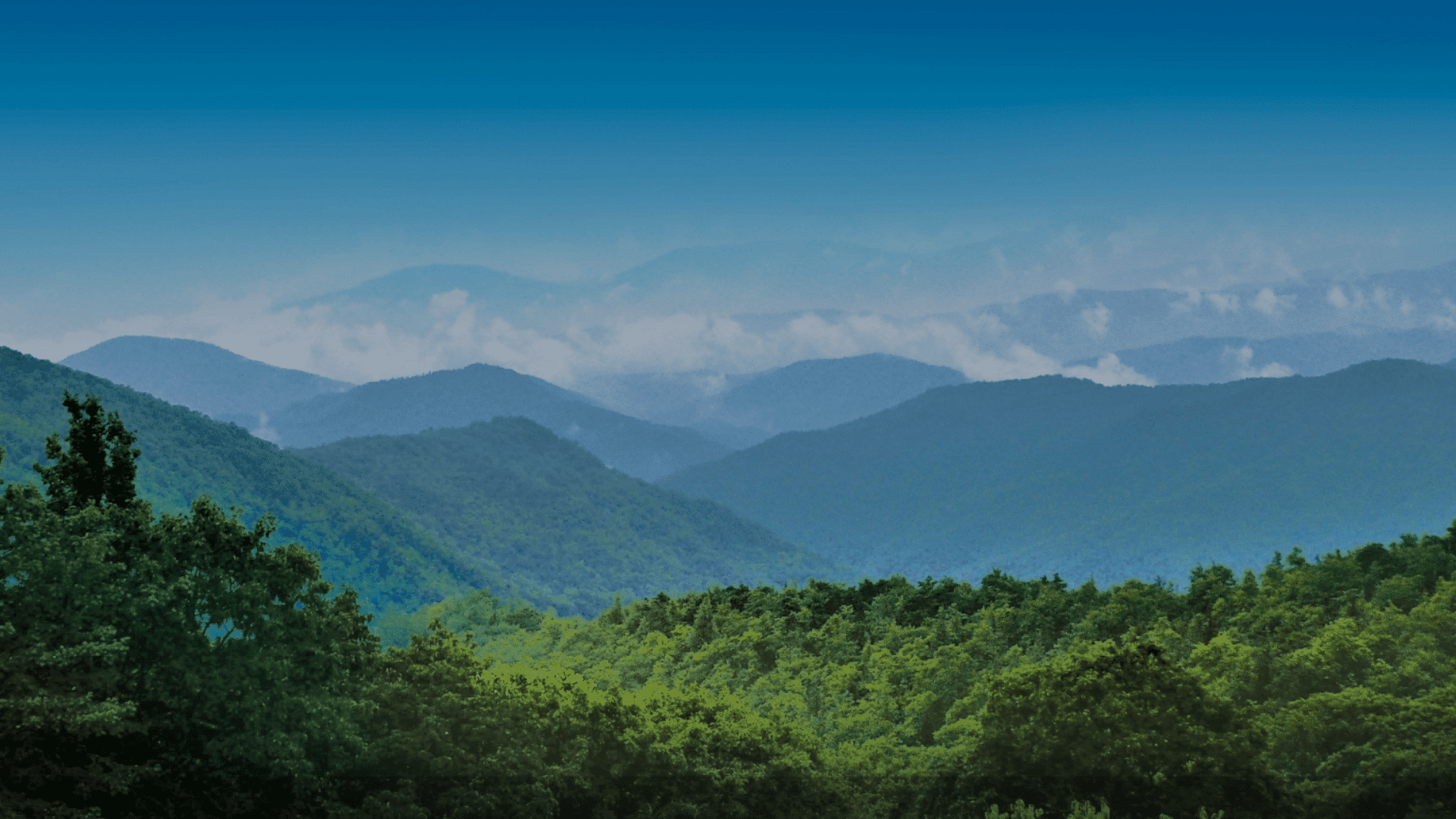
Brasstown Bald is Georgia’s highest point at 4,784 feet. The observation tower offers 360-degree views. On clear days, you can see four states from the top. The Blue Ridge ridges stretch out in all directions.
The town of Blue Ridge, Georgia, sits in a valley surrounded by blue ridges. Main Street offers views of the mountains on all sides. The Scenic Railway takes visitors through the blue-hazed valleys.
When to See the Blue Haze at Its Best?
The blue haze changes throughout the year based on weather and tree activity. Different seasons offer unique viewing experiences and haze intensity.
- Summer: Peak haze from maximum tree emissions. July and August show the deepest blue colors. Hot, humid days create thick haze that’s most visible from 11 AM to 3 PM.
- Fall: Blue haze combines with colorful leaves for stunning contrasts. September and October offer the best fall colors. The haze appears lighter but is still visible against orange and red foliage.
- Winter: Clearest air but minimal natural haze. Cold temperatures reduce tree emissions significantly. Snow-covered ridges can look blue from shadows and reflected light, but this comes from different causes.
- Spring: Emerging haze as trees leaf out and temperatures rise. May and June show building haze as new leaves start producing VOCs. Fresh green leaves create a beautiful contrast with the blue distant ridges.
Time of day matters for viewing the haze.
Early morning often shows the clearest air before haze builds. Late afternoon provides the strongest blue effect as temperatures peak.
Evening light can make the haze glow with warm colors that enhance the blue ridges.
Myths and Facts About the Blue Ridge Color
Many people have wrong ideas about why the Blue Ridge Mountains look blue. Here are the common myths and the real facts behind the blue color.
| Myth | Fact |
|---|---|
| The blue color comes from the blue rocks in the mountains | The rocks are mostly gray granite and green schist. Rock color does not affect the blue appearance. |
| The blue comes from humidity or water vapor | While humidity helps create haze, water droplets in fog appear white, not blue. |
| It’s just pollution making the mountains look hazy | Natural haze from trees creates a soft blue color. Pollution haze usually looks gray or brown. |
| The blue effect is an optical illusion | Scientists can measure the actual particles that create the haze. The blue color comes from real physical processes. |
While modern science explains the blue haze through tree chemistry and light scattering, people have noticed this phenomenon for centuries.
The Blue Ridge Mountains have a rich history of human observation long before we understood the science behind the blue color.
|
History and Culture of the Blue Haze The Cherokee people called these mountains “Shaconage,” meaning “place of blue smoke.” They noticed the blue haze thousands of years before European settlers arrived. Early European explorers also wrote about the mysterious blue appearance in their journals. |
Tips for Photographing the Blue Ridge Blue
The blue haze creates unique photographic opportunities that change throughout the day and seasons. Here are essential techniques to capture the layered blue effect that makes these mountains so photogenic.
- Golden Hour Timing: Shoot one hour before sunset when warm light contrasts with cool blue ridges for the most striking photos.
- Use a Polarizing Filter: This reduces atmospheric haze and makes distant ridges clearer. Use it carefully, as too much polarization can remove the blue effect completely.
- Focus on Layered Compositions: Look for viewpoints showing multiple ridges receding into the distance. Each ridge should appear progressively lighter blue.
- Choose Telephoto Lenses: These compress the distance between ridges and make the blue layering effect more obvious. Wide-angle lenses may make distant ridges too small.
- Shoot in RAW Format: This captures the full range of blue tones. The subtle color differences between ridge layers need careful processing for the best results
The Bottom Line
The Blue Ridge Mountains get their blue color from a remarkable natural process that happens right before your eyes.
Trees release invisible chemicals that react with air and sunlight to create tiny particles. These particles scatter blue light more than other colors, giving the mountains their famous blue appearance.
This blue haze has amazed people for thousands of years, from Cherokee tribes to modern visitors. The effect changes with seasons and weather, making each visit to the Blue Ridge Mountains a unique experience.
Next time you see the Blue Ridge Mountains from a distance, you’ll know the science behind their blue beauty.
The same trees that create lush green forests up close also produce the blue magic that makes these mountains so special.

